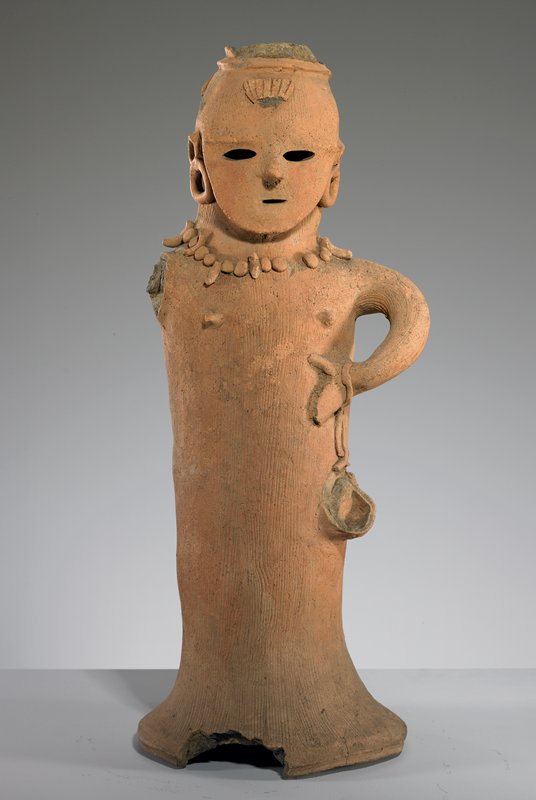info

Daiitoku Myōō, the Wisdom King of Awe-Inspiring Power, second half 13th century
Unknown Japanese
Unknown Japanese
G220




















![Autumn and Winter [left of the pair Scenes from the Tale of Genji in the Four Seasons], Unknown Japanese unsigned; left of a pair of six-panel folding screens; many scenes against gold leaf background; edge of building on left panel with snow; building at top across panels three to six the many seated figures wearing black with a few wearing red and blue; procession in LR of panels five and six with figures in black carrying covered dias and pulling two green carriages behind](https://1.api.artsmia.org/800/117153.jpg)
Autumn and Winter [left of the pair Scenes from the Tale of Genji in the Four Seasons], mid 17th century
Unknown Japanese
Unknown Japanese
Not on View










Writing box with pines, plum, chrysanthemums, and paulownia, 16th century
Unknown Japanese
Unknown Japanese
Not on View







Binzuru (Piṇḍola Bhāradvāja), the First of the Sixteen Arhats, 13th - early 14th century
Unknown Japanese
Unknown Japanese
G220



































![Whose Sleeves? [right of a pair], Unknown Japanese unsigned](https://1.api.artsmia.org/800/24494.jpg)




Red-and-blue-laced Suit of Armor from the Kii Tokugawa Family, mid 17th century
Suit by Unknown Japanese; Artist: Helmet by Saotome Iechika
Suit by Unknown Japanese; Artist: Helmet by Saotome Iechika
G219








![Netsuke [woman giving man a treatment], Unknown Japanese woman sitting behind a man; woman applies a burning stick to the man's back while he grimaces and pulls away](https://3.api.artsmia.org/800/30453.jpg)

![Netsuke [six ginko nuts], Unknown Japanese cluster of six nuts](https://1.api.artsmia.org/800/30521.jpg)












Flower Arrangement by Takada Anritsubō Untai; Pine, Chrysanthemum and Camelia, 19th century
Unknown Japanese
Unknown Japanese
Not on View



Flower Arrangement by Takada Anritsubō; Lilies and Bellflowers, 19th century
Unknown Japanese
Unknown Japanese
Not on View
















![A Collection of Monsters [one of a pair], Unknown Japanese brightly colored fantastic creatures with animal and human attributes, many with pointed claws, tusks, grotesque faces, or apparition-like qualities](https://4.api.artsmia.org/800/117037.jpg)
A Collection of Monsters [one of a pair], late 18th - early 19th century
Unknown Japanese
Unknown Japanese
Not on View















Life-Prolonging Jizō Bodhisattva (Enmei Jizō Bosatsu), early 14th century
Unknown Japanese
Unknown Japanese
Not on View







![Scenes from the Tale of Genji [right of a pair], Unknown Japanese unsigned; 6 panel screen with vignettes separated by golden clouds; beginning at R, a male figure on a chair, and smaller figure on green mat hold audience in a room; below, a woman inside looking through screen at other women outside; men gather around a carriage; musicians in white with male dancer entertain small audience on verandah and bridge; female figure in bushes watches male and female figure near center; men in room with green mat along with papers; women at bottom gathered in room, etc.](https://4.api.artsmia.org/800/118479.jpg)


Four-case inro decorated with scattered hawk and pheasant feathers, 18th-19th century
Unknown Japanese
Unknown Japanese
Not on View































Nyoirin Kannon, the Bodhisattva of Compassion with the Wish-granting Jewel, 13th - early 14th century
Unknown Japanese
Unknown Japanese
Not on View









![A Collection of Monsters [one of a pair], Unknown Japanese various images of brightly colored demons and other imagined creatures; many with fangs and claws; some on fire; others riding on clouds or emerging from waves](https://3.api.artsmia.org/800/117036.jpg)
A Collection of Monsters [one of a pair], late 18th - early 19th century
Unknown Japanese
Unknown Japanese
Not on View
























(Writing box with peonies, wisteria, and a Chinese lion chasing butterflies), late 19th - early 20th century
Unknown Japanese
Unknown Japanese
Not on View







Wedding robe (uchikake) with design of standing curtains, maple trees, and large drum, late 19th century
Unknown Japanese
Unknown Japanese
Not on View







Wedding robe (uchikake) with design of paulownia and chrysanthemums in flowing water, 20th century
Unknown Japanese
Unknown Japanese
Not on View











(Writing box decorated with maple tree and deer in the style of Hon’ami Kōetsu), late 19th - early 20th century
Unknown Japanese
Unknown Japanese
Not on View




Dakiniten, the Buddhist Manifestation of the Shinto Deity Inari, late 14th century
Unknown Japanese
Unknown Japanese
Not on View



















![Single-line calligraphy [left of a set of three scrolls], Unknown Japanese five bold characters written on gold background; off-white satin mount; L scroll](https://3.api.artsmia.org/800/117820.jpg)
Single-line calligraphy [left of a set of three scrolls], first half 18th century
Unknown Japanese
Unknown Japanese
Not on View





















Bowl with design of landscapes, butterflies, and fishnet, late 19th century
Unknown Japanese
Unknown Japanese
Not on View




Kimono (furisode) with design of a fishing village in spring, 1st half of the 19th century
Unknown Japanese
Unknown Japanese
Not on View














showing 300 of 1889 results matching artist:"Unknown Japanese". (load 200 more)